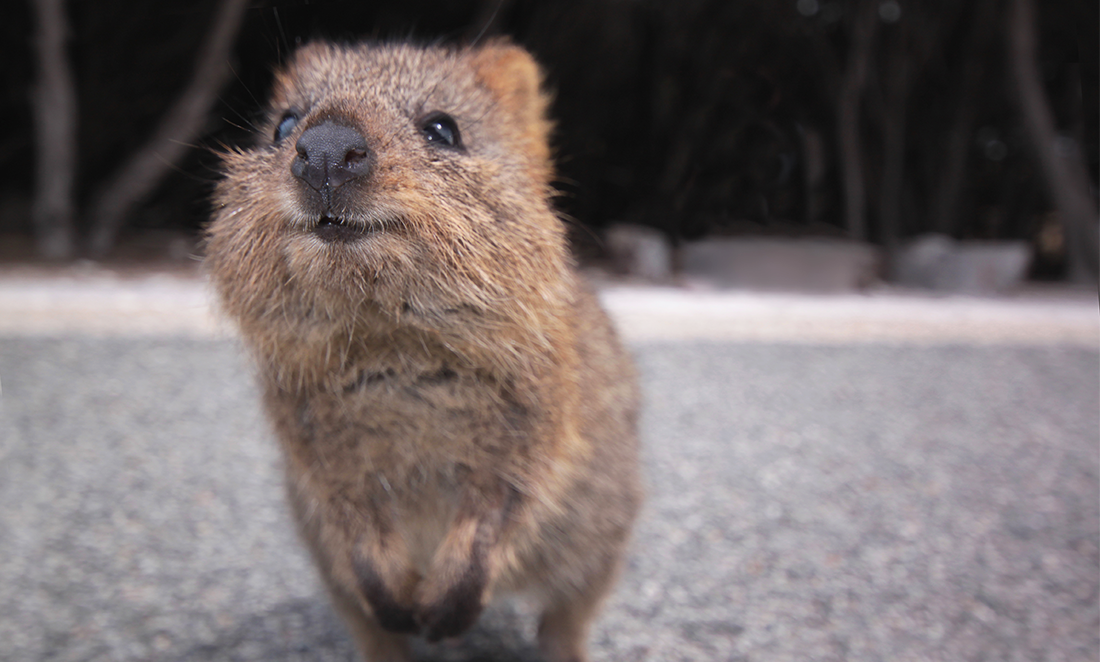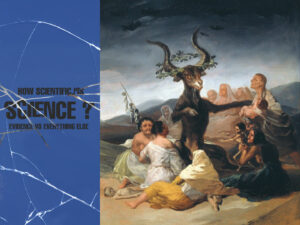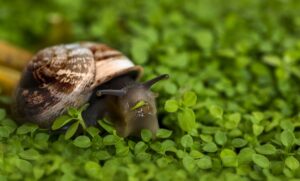Duchenne muscular dystrophy (DMD) is a muscle-wasting disease that affects one in every 3500 boys around the world.
It is a genetic disease that boys inherit from their mother. Girls can inherit the gene as a carrier and may display mild symptoms, but nothing as debilitating as a boy’s experience.
Boys are usually wheelchair bound by their early teens. Most die by their mid-20s, often from heart failure or an inability to breathe.
It was once thought incurable. But today, trials of a WA-developed drug are under way in America with promising results.
And who provided the jumpstart for this medicinal marvel?
None other than the happy, hopping quokka.
LAB QUOKKAS
Back in the mid-20th century, scientists thought the quokka was quite an odd organism because of its unique biology and habitat.
To better understand these bounding bundles of happiness, scientists at UWA put several specimens in cages.
At first, they didn’t learn a lot.
Academic understanding of the quokka was hampered by the fact that they kept dying, though not before they suffered muscle paralysis.
In 1960, Professor Byron Kakulas, then a mere PhD candidate, was asked to investigate the problem.
Little did he know that he’d make a discovery that would revolutionise the treatment of several debilitating diseases.
MUSCLE REGENERATION STIMULATES STUDIES
Around this time, vet scientists discovered the importance of trace elements. Animals had to consume small amounts of minerals such as copper, zinc and chromium to maintain health.
Knowing this, Professor Kakulas began to suspect that the caged quokkas were suffering from a vitamin E deficiency.
When this deficiency was rectified, not only did the quokkas stop dying, but their muscles began to regenerate.
Previously paralysed quokkas recovered completely, something once believed to be biologically impossible.
This discovery—that muscle fibres are capable of regeneration—inspired a flurry of research. It initiated searches for cures of many different muscular diseases.
In 1967, the Muscular Dystrophy Association of Western Australia was established to fund a cure for DMD based on the quokka discovery.
Perth hosted the International Congress of Muscle Diseases in 1971. It was the first major international congress to be held in Australia, putting our medical research (and the quokka) in a global spotlight.
The Australian Neuromuscular Research Institute (now the Perron Institute for Neurological and Translational Science) was established in 1983. It facilitated research into other neuromuscular diseases such as stroke, Parkinson’s and multiple sclerosis.
RESEARCH TO RESULTS
Almost half a century after Professor Kakulas was presented with his first dead quokka, clinical trials of a drug to treat DMD have begun in the US.
DMD is the most common lethal muscle disease.
It is a genetic disease, with two-thirds of cases inherited from parents and the other third a result of spontaneous DNA mutations.
DMD affects how the body produces dystrophin, a protein that protects the membrane of muscle fibres during muscle contractions. Without dystrophin, the membranes get damaged and muscles waste away, replaced by fat and fibrous connective tissue.
Of all the genes in the body that make proteins, the gene for dystrophin is one of the longest with 2.2 million base pairs. That’s more than 30 times the length of an average protein gene, which has 66,600 base pairs.
The base pairs in the dystrophin gene are chunked into 79 exons of DNA, which join together like puzzle pieces in a chain.
DMD occurs when an exon in the middle of this chain is deleted, preventing the protein from linking together. To do its job in our body, dystrophin needs both ends of its protein chain.
Murdoch University researchers have developed a drug called eteplirsen, which can patch the two chain ends together.
Professors Steve Wilton and Sue Fletcher have created ‘molecular patches’ that mask the mutated section of DNA. Eteplirsen helps cell protein producers skip over the break in the DNA, creating shorter (but still semi-functional) forms of dystrophin.
This semi-functional dystrophin can prevent—and in some cases restore—the deterioration of muscle weakness.
NOT A JACK OF ALL CURES
Because the gene for dystrophin is so long, mutations that cause DMD can occur at many different points. This variability means that one drug can’t be used to treat all DMD patients as molecular patches are designed to mask one specific spot on the DNA.
Professors Wilton and Fletcher’s drug treats a gene mutation that affects around 10% of boys suffering from DMD.
Some data suggests that 80% of DMD patients have DNA mutations that would respond to this same gene-skipping technology.
And so far, clinical trials suggest that the technology works.
WALKING ON SUNSHINE
In 2012, 12 boys in the US participated in a trial of eteplirsen—at a cost of US$300,000 a year.
There have certainly been success stories. Billy Elsworth from Pennsylvania visited Perth to thank Professors Wilton and Fletcher. At 16, he is still able to walk. In fact, in 2015, he ran the Pittsburgh Kids Marathon.
Hopefully, while in Perth, he was able to hop on over to Rottnest Island and thank the quokka too.








